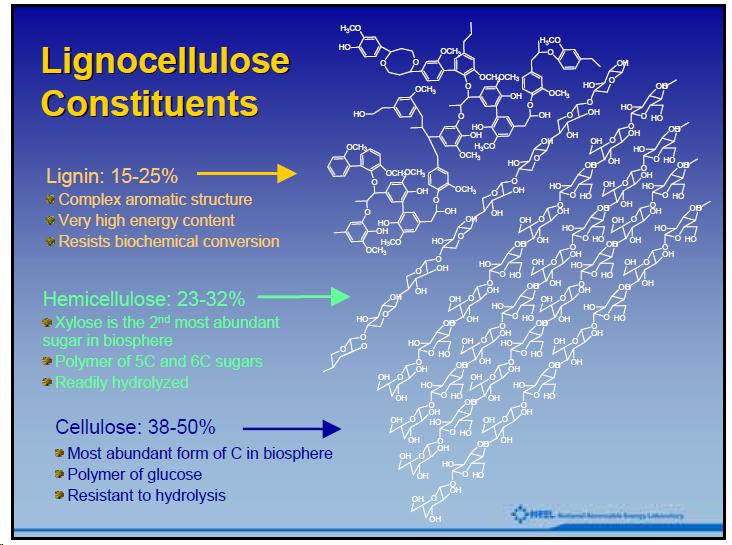Lecture Notes
Here is a a rough breakdown of the percent of lignin, hemicellulose, and cellulose in biomass. Lignin is a significant component of woody and herbaceous plants; it gives stems strength and water and rot resistance and is a very complex molecule that binds cellulose fibers together. Separating cellulose from lignin is one of the major steps in converting feedstocks to ethanol. Lignin has high energy content, but this is not used for the production of ethanol. Hemicellulose comprises approximately 23-32% of the stems that we work with. It's major component is xylose, a 5-carbon sugar that's the second most abundant sugar in the biosphere. There are also other sugars in hemicellulose including the 6-carbon sugars, mannose and galactose. Thus, it contains a number of different 5- and 6-carbon sugars. It is readily hydrolyzed or broken down as we convert the stems into ethanol. Finally we get to cellulose, the portion of the stem that is important in the conversion of feedstock to ethanol. Cellulose comprises about 38-50% of the stems. Again this number will vary depending on the year, the plant species we're dealing with, and where it's grown. It's the most abundant form of carbon in the biosphere, and it's comprised of large chain carbon molecules that can be broken down into 6-carbon glucose molecules that can then be distilled into ethanol. Cellulose contains a great amount of energy, and the large carbon molecules resist breakdown into the 6-carbon glucose molecules that are converted into ethanol.


